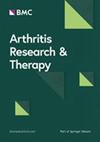Using in vivo calcium imaging to examine joint neuron spontaneous activity and home cage analysis to monitor activity changes in mouse models of arthritis
IF 4.9
2区 医学
Q1 Medicine
引用次数: 0
Abstract
Studying pain in rodent models of arthritis is challenging. For example, assessing functional changes in joint neurons is challenging due to their relative scarcity amongst all sensory neurons. Additionally, studying pain behaviors in rodent models of arthritis poses its own set of difficulties. Commonly used tests, such as static weight-bearing, often require restraint, which can induce stress and consequently alter nociception. The aim of this study was to evaluate two emerging techniques for investigating joint pain in mouse models of rheumatoid- and osteo-arthritis: In vivo calcium imaging to monitor joint afferent activity and group-housed home cage monitoring to assess pain-like behaviors. Specifically, we examined whether there was increased spontaneous activity in joint afferents and reduced locomotor activity following induction of arthritis. Antigen induced arthritis (AIA) was used to model rheumatoid arthritis and partial medial meniscectomy (PMX) was used to model osteoarthritis. Group-housed home cage monitoring was used to assess locomotor behavior in all mice, and weight bearing was assessed in PMX mice. In vivo calcium imaging with GCaMP6s was used to monitor spontaneous activity in L4 ganglion joint neurons retrogradely labelled with fast blue 2 days following AIA and 13–15 weeks following PMX model induction. Cartilage degradation was assessed in knee joint sections stained with Safranin O and fast green in PMX mice. Antigen induced arthritis produced knee joint swelling and PMX caused degeneration of articular cartilage in the knee. In the first 46 h following AIA, mice travelled less distance and were less mobile compared to their control cage mates. In contrast, no such differences were found between PMX and sham mice when measured between 4–12 weeks post-surgery. A larger fraction of joint neurons showed spontaneous activity in AIA but not PMX mice. Spontaneous activity was mostly displayed by medium-sized neurons in AIA mice and was not correlated with any of the home cage behaviors. Group-housed home cage monitoring revealed locomotor changes in AIA mice, but not PMX mice (with n = 10/group). In vivo calcium imaging can be used to assess activity in multiple retrogradely labelled joint afferents and revealed increased spontaneous activity in AIA but not PMX mice.使用体内钙显像检查关节神经元自发活动和家笼分析监测活动变化的小鼠关节炎模型
研究啮齿动物关节炎模型的疼痛是具有挑战性的。例如,评估关节神经元的功能变化是具有挑战性的,因为它们在所有感觉神经元中相对稀缺。此外,在啮齿动物关节炎模型中研究疼痛行为也有其自身的困难。常用的测试,如静态负重,往往需要约束,这可能引起压力,从而改变伤害感觉。本研究的目的是评估两种用于研究类风湿关节炎和骨关节炎小鼠模型关节疼痛的新兴技术:体内钙成像监测关节传入活动和群养家庭笼监测评估疼痛样行为。具体来说,我们检查了关节炎诱导后关节传入事件的自发活动是否增加,运动活动是否减少。抗原诱导关节炎(AIA)模型用于类风湿关节炎,部分内侧半月板切除术(PMX)模型用于骨关节炎。采用群养家养笼监测评估所有小鼠的运动行为,并评估PMX小鼠的负重。用GCaMP6s在体内钙显像监测AIA后2天和PMX模型诱导后13-15周L4神经节关节神经元的自发活动。在PMX小鼠膝关节切片上用红素O和快绿染色评估软骨退化。抗原诱导的关节炎引起膝关节肿胀,PMX引起膝关节关节软骨变性。在AIA后的前46小时,与对照组相比,小鼠行走的距离更短,流动性更低。相比之下,在术后4-12周的测量中,PMX和假手术小鼠之间没有发现这种差异。AIA小鼠的关节神经元自发活动较多,而PMX小鼠则没有。自发性活动主要表现在AIA小鼠的中型神经元上,与任何家笼行为无关。群养的家笼监测显示AIA小鼠的运动改变,而PMX小鼠没有(n = 10/组)。体内钙显像可用于评估多个逆行标记的关节传入事件的活动,并显示AIA小鼠自发活动增加,而PMX小鼠则没有。
本文章由计算机程序翻译,如有差异,请以英文原文为准。
求助全文
约1分钟内获得全文
求助全文
来源期刊

Arthritis Research & Therapy
RHEUMATOLOGY-
CiteScore
8.60
自引率
2.00%
发文量
261
审稿时长
14 weeks
期刊介绍:
Established in 1999, Arthritis Research and Therapy is an international, open access, peer-reviewed journal, publishing original articles in the area of musculoskeletal research and therapy as well as, reviews, commentaries and reports. A major focus of the journal is on the immunologic processes leading to inflammation, damage and repair as they relate to autoimmune rheumatic and musculoskeletal conditions, and which inform the translation of this knowledge into advances in clinical care. Original basic, translational and clinical research is considered for publication along with results of early and late phase therapeutic trials, especially as they pertain to the underpinning science that informs clinical observations in interventional studies.
 求助内容:
求助内容: 应助结果提醒方式:
应助结果提醒方式:


